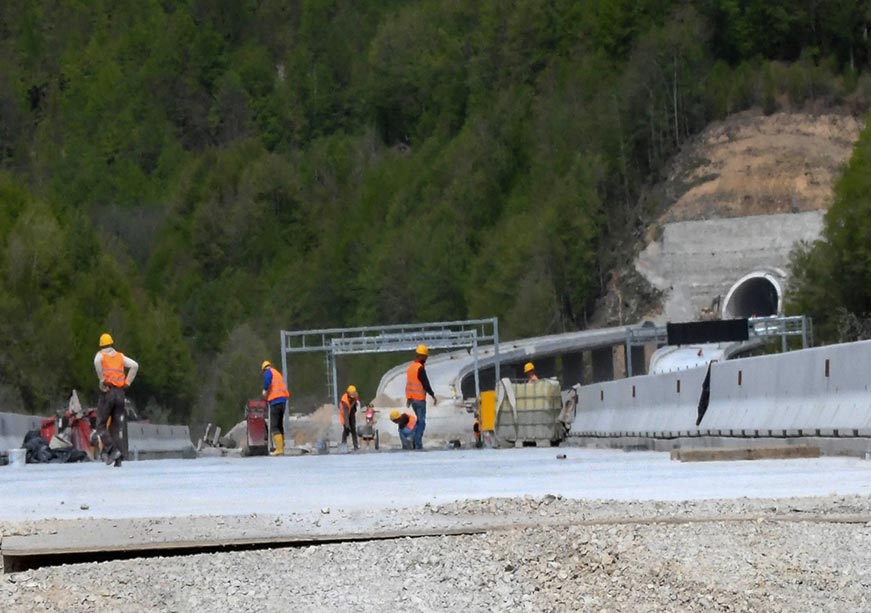-
CENTRES
Progammes & Centres
Location

Image Source: Getty
India’s Northeastern Region (NER), long viewed as a peripheral frontier, is now emerging as a strategic geoeconomic bridge between South and Southeast Asia. Under the Act East Policy, New Delhi envisions the NER as a gateway to the Indo-Pacific, linking India’s hinterland with ASEAN economies through multimodal infrastructure.
This vision has been unfolding within a rapidly evolving regional landscape, where China’s growing dominance in infrastructure, trade, and connectivity across India’s neighbourhood presents both opportunities and challenges for India’s strategic ambitions.
Landlocked NER’s true potential lies in its connectivity to the Bay of Bengal and the broader Indo-Pacific. Traditionally reliant on resource-based industries—tea, petroleum, bamboo, and handicrafts—its future hinges on transforming into a trade and transit hub between India and Southeast Asia. Projects like the Kaladan Multimodal Transit Transport Project (KMTTP) aim to create alternative export and import routes, reducing dependence on the vulnerable Siliguri Corridor.
Under the Act East Policy, New Delhi envisions the NER as a gateway to the Indo-Pacific, linking India’s hinterland with ASEAN economies through multimodal infrastructure.
At a time when India envisions a geoeconomic role for the NER, China’s expansive infrastructure projects in Myanmar and Bangladesh–––reshaping regional trade networks––– directly impact Northeast India’s economic prospects. From Myanmar’s Kyaukpyu Port to Bangladesh’s transport corridors and deep-sea ports, China’s geoeconomic influence challenges India’s connectivity ambitions.
India’s attempt to counterbalance through initiatives like the Bay of Bengal Initiative for Multi-Sectoral Technical and Economic Cooperation (BIMSTEC) and the Indo-Pacific Economic Framework (IPEF) depends on overcoming domestic infrastructure constraints, insurgencies, and diplomatic challenges with neighbouring countries.
For industries in the NER, China’s expanding footprint presents both opportunities and risks. Improved regional connectivity could give Assam’s tea industry and Manipur’s handloom sector access to broader markets. However, the influx of cheap Chinese goods through informal border trade with Myanmar has weakened local manufacturing. With the region struggling to develop a robust industrial base, its dependence on imported consumer goods remains high.
Chinese products often enter through border towns, dominate local markets, and undercut domestic enterprises. Additionally, China’s aggressive trade diplomacy with Bangladesh and Myanmar has further eroded the competitiveness of Indian exports from the Northeast. The key challenge for India is to ensure that its connectivity projects do more than open transit routes—they must also drive industrial growth that strengthens local supply chains and reduces vulnerability to Chinese economic influence.
Upgrading physical connectivity should remain the top priority, particularly fast-tracking key projects like the Kaladan corridor and the India-Myanmar-Thailand Highway by resolving security and financing bottlenecks in coordination with Myanmar and Thailand.
To fully harness the NER’s geoeconomic potential within the Indo-Pacific, India and its partners must adopt a multi-pronged strategy to enhance connectivity, foster industrial growth, and ensure inclusive, sustainable development that benefits local communities.
First, accelerating connectivity and trade facilitation is crucial. Upgrading physical connectivity should remain the top priority, particularly fast-tracking key projects like the Kaladan corridor and the India-Myanmar-Thailand Highway by resolving security and financing bottlenecks in coordination with Myanmar and Thailand.
Regardless of the political dispensation, diplomatic engagement with Myanmar’s authorities must ensure these corridors are treated as shared economic lifelines. Expanding land customs stations (LCS) and integrated checkpoints on the Indo-Myanmar and Indo-Bangladesh borders will boost trade, alongside establishing consulates of ASEAN countries in the NER. Additionally, easing non-tariff barriers and simplifying export procedures for Northeast-based firms can help local entrepreneurs engage in cross-border commerce more easily.
Second, developing competitive industrial clusters is key to positioning the NER as a hub for specialised industries. Policymakers should identify sectors where the region holds a comparative advantage—such as agro-processing (tea, fruits, spices), handicrafts and textiles (leveraging GI tagging and branding), pharmaceuticals (establishing pharma parks in Assam and Sikkim), and bamboo-based industries—and develop export-driven industrial clusters around them.
Special Economic Zones (SEZs) and industrial parks must be operationalised urgently, offering “plug-and-play” infrastructure, tax breaks, and single-window clearances to attract investors. Enhancing access to credit for local MSMEs is equally vital, necessitating an expansion of schemes like the North East Entrepreneurship Development Program (NEEDP) to provide affordable business loans.
Third, enhancing human connectivity and soft infrastructure is as vital as physical connectivity. Investing in human capital is critical to integrating the NER with Indo-Pacific economies, requiring the expansion of skill development programs aligned with emerging industries, including training in logistics, foreign languages (for tourism and trade), and technical expertise for manufacturing.
Digital connectivity should also be a priority when integrated into national e-governance and digital trade initiatives.
Strengthening educational and cultural ties with ASEAN countries could position the Northeast as India’s cultural gateway to Southeast Asia. Promoting tourism as a strategic industry—by easing permit restrictions for foreign visitors, developing thematic tourist circuits (such as Buddhist trails and eco-tourism in the eastern Himalayas), and improving air connectivity—could attract investment and goodwill. Digital connectivity should also be a priority when integrated into national e-governance and digital trade initiatives.
Fourth, leveraging partnerships with Japan, the US, and other partners offer an opportunity to strengthen the region’s infrastructure and economic base. Japan has already provided Official Development Assistance (ODA) for roads, bridges, and water supply in the NER, viewing it as a crucial element of its Free and Open Indo-Pacific (FOIP) vision.
This collaboration should be expanded to new initiatives under the India-Japan Act East Forum, such as high-speed internet corridors, renewable energy investments (hydro and solar projects), and manufacturing zones for Japanese SMEs seeking to diversify beyond China. The U.S., too, has demonstrated interest by initiating Northeast-focused dialogues within its Indo-Pacific strategy, which should now translate into tangible projects.
Fifth, ensuring inclusive and environmentally sustainable growth is essential for long-term stability. Development efforts must incorporate local communities in decision-making to prevent discontent and ensure equitable distribution of benefits. Infrastructure development should be ecologically sensitive, adhering to environmental norms to mitigate risks like landslides, floods, and deforestation. Given the region’s vulnerability to high seismic activity and heavy rainfall, investments in climate-resilient infrastructure will yield long-term cost savings.
With the right investments, policy coherence, and diplomatic agility, Northeast India can emerge as a dynamic trade corridor and a key driver of India’s Act East ambitions.
Finally, transforming India’s Northeastern Region into a geo-economic hub is not merely an infrastructural challenge but a strategic imperative. However, realising this vision requires a holistic approach—one that combines robust physical and digital infrastructure with policies that empower local industries and communities.
Equally, partnerships with allies such as Japan and the United States must translate into actionable projects that enhance the region’s economic resilience against external competition, particularly from China. With the right investments, policy coherence, and diplomatic agility, Northeast India can emerge as a dynamic trade corridor and a key driver of India’s Act East ambitions.
This commentary originally appeared in Asian Confluence.
The views expressed above belong to the author(s). ORF research and analyses now available on Telegram! Click here to access our curated content — blogs, longforms and interviews.

Soumya Bhowmick is a Fellow and Lead, World Economies and Sustainability at the Centre for New Economic Diplomacy (CNED) at Observer Research Foundation (ORF). He ...
Read More +